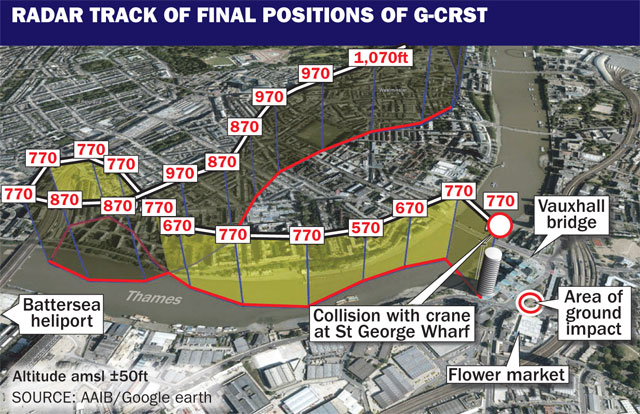The AgustaWestland AW109E helicopter that crashed into a crane over central London on 16 January was turning right over the river Thames to reverse its easterly track and head west for Battersea heliport when it hit the crane's jib at a recorded secondary surveillance radar altitude of 800ft (244m), according to a special bulletin from the Air Accidents Investigation Branch.
The pilot, who had previously been cleared to hold over the river Thames to await clearance to Battersea, had just been informed by air traffic control that Battersea heliport could accept an approach. He had also been provided with Battersea's frequency to enable him to retune his radio and call the heliport. However, about five seconds after the pilot acknowledged the frequency change information the aircraft hit the crane while undertaking a right-hand turn through about 180˚.

The aircraft had departed Redhill aerodrome at 07:35 GMT for the flight to Elstree to pick up a client. Weather at Elstree was freezing fog, and the client - who was heading there by car - told the pilot that it was unlikely he would be able to land, but the pilot said he would try anyway. When he failed to "find a hole" in the fog at Elstree, the pilot was given visual flight rules clearance to return to Redhill "not above 1,500ft" via the London Eye.
En route, the pilot inquired whether Battersea was open. ATC said they would check, and advised him to hold over the river Thames while they did so. It was just after ATC advised the pilot that Battersea would accept an approach and the pilot began a turn toward the heliport that the AW109E hit the crane's jib.
The AAIB says the crane tower and jib were lit with red lights, and the height of the jib's tip was 719ft above ground level. The aircraft was flying with the local area pressure set on its altimeter, which would have been reading height above sea level.
Source: Flight International
















